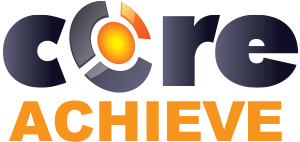Peer-to-Peer Learning: What It Is and How It Affects You
January, 05 2023
Other posts:
Enhancing Team Dynamics for Effective Group Decision-Making with LMS Integration
Organizations increasingly rely on collaborative efforts to solve complex problems, innovate, and adapt to change, but how do we ensure that collaboration is happening.
Maximizing Small Business Potential with Training Technology
Training technologies can push small businesses ahead of their competitors, but what are the factors that go into choosing the right technology?
Unlocking Employee Potential: The Transformative Benefits of an Interactive Learning Management System (LMS)
Interactive training allows for unlocking employee potential, but how is it done?
Building a Robust Sales Pipeline with Training
Every organization wants a streamlined sales pipeline, but building one requires a series of interlocking activities with one of the most important being training.
Strategies for Adapting In-Person Training to Online Platforms
Online training is one of the most flexible ways of delivering training across organizations, but how do you even begin to adapt in-person training into online?
At first glace, peer-to-peer gives the same impression that microlearning did--a neat idea shoved into ad hoc services focused all around the gimmick, but is this fair representation?
Peer-to-peer learning is quite simple, it refers to the learning method of a group of learners, all around the same level, working togethers towards a mutual understanding of the content. The idea is that learners can learn more efficiently and broadly if compelled to learn from one another.
Peer-to-peer is most often utilized with collaborative projects, rather than courses, as the primary motif of peer-to-peer is having a shared goal.
Benefits
Teamwork - The major benefit of peer-to-peer is in the name—it fosters team building and an appreciation of different perspectives. Of course, teamwork is essential for an effective workplace or organization, so implementing peer-to-peer into your training will help cultivate these essential skills.
Thorough Understanding – While building teamwork, peer-to-peer can sometime produce a more thorough understanding of the content as it will be discussed between multiple different perspectives and learning types.
Allows Learners to experience realistic projects – The best thing about learning with projects and teamwork is that they provide insights into how organizations typically function. Even if this doesn’t fit your organization, you can still create projects based on your organization.
Downsides
Can Take Longer – What you’ll notice immediately, however, is that learning via peer-to-peer can slow down how long it takes for your learners to complete training.
May Impact Quality – Here’s the other side of developing a more thorough understanding, if the learners go off on the wrong route it may plant seeds of not useful or just bad information. It’s easy for people to fall in-line with people around them and peer-to-peer may favor people who are the loudest—not the most correct.
Could Require More Supervision – This problem follows directly off the last one because if your learners are going down the wrong path, they might need to be steered back to the right direction. Therefore, you may need to continuously watch their progress—something that not every learning and development team can spare.
How can we use peer-to-peer learning to maximize effectiveness
Peer-to-peer learning is evenly split between pros and cons. However, this does not mean that you’ll find about 50% success, rather, many of the problems will overtake all the benefits or vice versa. Peer-to-peer should not be used as the only learning avenue for your organization. It’ll perform it’s best whenever its only part of the learning curriculum.
Don’t start investing into peer-to-peer services…
Often peer-to-peer service provides will try to convince you that peer-to-peer will solve all your learning and development problems, but they are trying to sell you something. As covered above, peer-to-peer is not the end-all-be-all and may cause more issues. As such, be cautious about hastily adopting new systems specifically for it.
…because you can integrate peer-to-peer yourself
You don’t need invest in tailor made peer-to-peer learning services because a typical learning management system will do. For example, you could build the projects into courses and then assign those courses to the groups you decided.
Key takeaways
Peer-to-peer learning works from allowing learners to work together towards a common cause like a project. Because of this collaborative nature, peer-to-peer is great for building team skills while also potentially giving learners experience with how projects are conducted within an organization.
Yet, peer-to-peer does have some downsides. For example, since learning is led by a group that doesn’t know everything about the subject, sometimes learners can lead themselves astray learning false lessons. Worse, because they can follow false leads, time may be wasted.
Considering this give and take, don’t rush into any peer-to-peer service providers immediately. Rather, implement peer-to-peer slowly and partly into your current learning content with the systems that you have now.
Get started with CoreAchieve for free.
Photo by Jason Goodman on Unsplash

Leave comment: